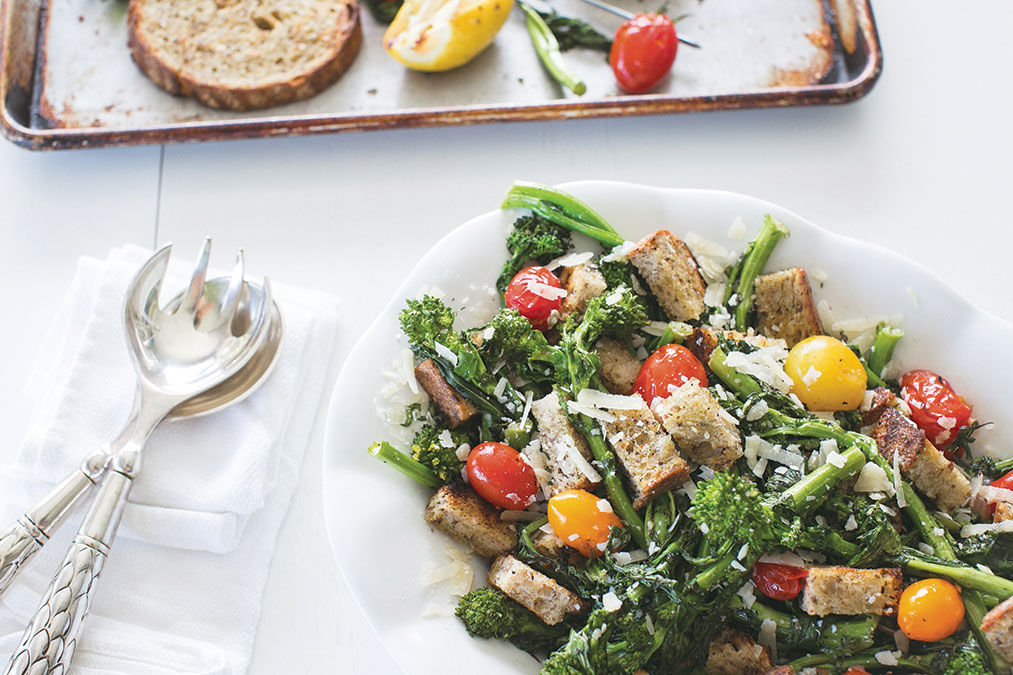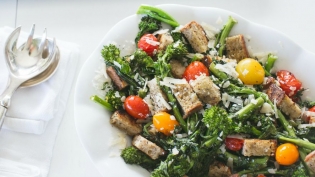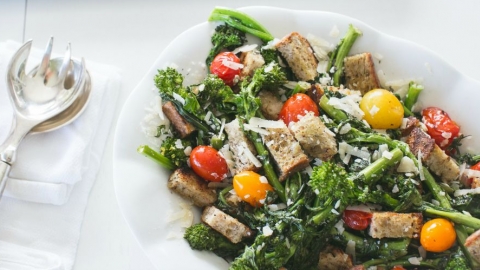A Guide to Eating Local
As a child, my evening meal often consisted of a predictable assortment of vegetables with carrots, peas, string beans and corn gracing my plate on a fairly regular basis. Of course, there was always an adventurous parent who dared to stray outside their family’s comfort zone and serve Brussels sprouts, cauliflower, beets or succotash, but nonetheless, the mainstay of many a meal was the fantastic four mentioned above.
Today, the consummate shopper has a whole new world of vegetables to choose from. Because of the desire to eat healthy, many consumers venture into the vegetable aisle of their grocery store, or farmers’ market, with a willingness to sample some of the unusual offerings nestled in the myriad baskets and bins that lay before them. Many of these mysterious vegetables have been shipped from the far corners of the world, while others are grown right here in our own country. Kohlrabi, celeriac, Romanesco cauliflower, rutabagas, jicama and broccoli rabe are just a few of the choices that challenge our imaginations, inspiring us to broaden our culinary horizons and revamp our cooking styles.
Not wanting to bite off more than we can chew, or cook, broccoli rabe is the order of the day and the subject of this article. This green cruciferous vegetable is known by a variety of names, including rapini, rapa, rapine, Chinese broccoli and turnip broccoli, but here in the United States it is commonly known as broccoli rabe, or broccoli raab, which is pronounced (rob). Do not be misled by the fact that although broccoli is part of its name, this vegetable is closely related to the turnip, not broccoli, and is thought to have originated in China or the Mediterranean. Part of this confusion may lay in the fact that the top of the plant consists of clusters of broccoli-like buds, which have a softer look than those of the broccoli plant.
When making your selection, be sure that the florets are tightly closed and dark green in color. Look for stems that are small, firm and green, and avoid plants that have wilted, yellowing leaves. Plants with smaller leaves are younger, more tender and milder in taste. If your selection smells like cabbage, it has been around too long, so choose another. Since broccoli rabe can have a strong rather bitter flavor, which is similar to mustard greens, the above advice will hold you in good stead. Remember, it may take a while to acquire a taste for broccoli rabe, but once you do, you will sing its praises for life.
You can happily feel guilt-free when you sit down for a serving of broccoli rabe. One cup has only 9 calories, and a 3½-ounce portion provides more than half the daily requirements for vitamins A and C. It is a good source of folate (a B vitamin), vitamin K, potassium, calcium and iron. Broccoli rabe is fat and cholesterol free, as well as low in sodium. Seconds anyone?
This vegetable must be stored in the refrigerator. When doing so, be sure to remove the twist tie. Make sure that you store the vegetable in a plastic bag, washing it only when ready to use. Broccoli rabe will keep in the refrigerator for four to five days.
When preparing your broccoli rabe, clean it as you would other greens, removing a ¼ inch from the bottom of the stems. Blanch before cooking to make it less bitter. To blanch, give the broccoli rabe a brief dunk in salted (optional) boiling water and follow with a dip in ice water. This will reduce the vegetable’s bite. You can broil, stir-fry, steam or sauté the leaves, stems and florets. It is often steamed with lemon and garlic. When you sauté, use a little olive oil with as much garlic as suits your taste. You can remove the stems up to where the leaves begin, sautéing them first before adding the leaves. Sauté for 3 to 5 minutes, or until tender. Broccoli rabe can be used in salads, on pizza or in sandwiches and soups. It makes a nice addition when combined with pasta, rice or Italian and Asian dishes. Unleash your creativity; the sky’s the limit!
Tracey Medeiros likes to keep it local and seasonal in her kitchen.







